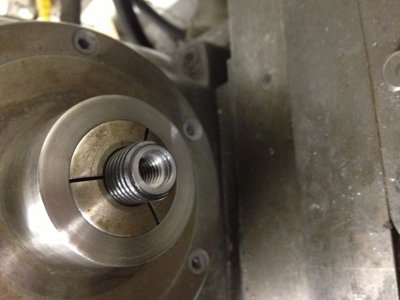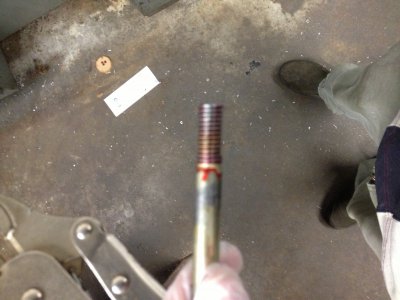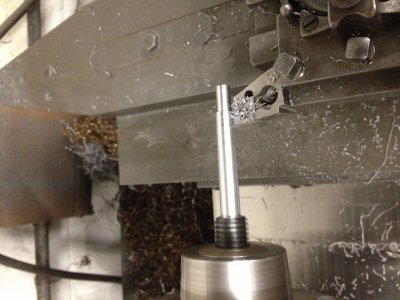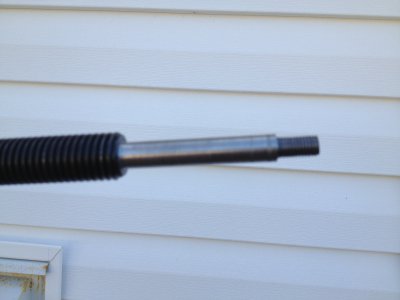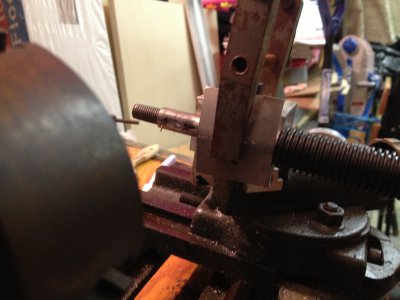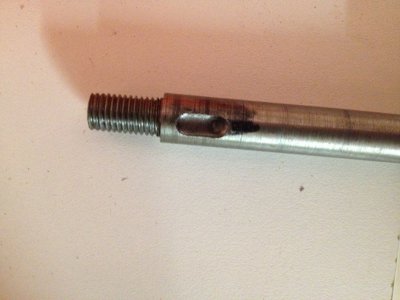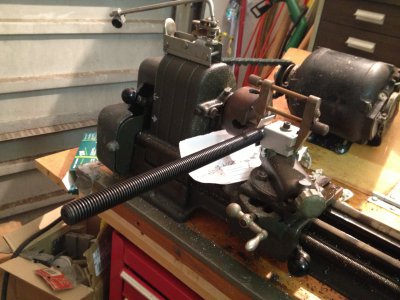I got an almost new palmgren compound table for about 25% of the new price. I bought it knowing it had something wrong with the Y axis feed. From the pictures it looked like the screw was bent. I figured it would be an easy enough fix so I bought it I'm not sure what ill use it for yet. I've considered using it to build a mini mill or Cnc it just to play with. Anyway I got the table and it was shipped pretty carefully and still in its original packaging never used. The screw was bent where the hand wheel was attached. It looked like it was damaged in shipping previously. I tried bending it straight but it just wouldn't get perfectly straight. The threaded portion of the screw was still perfectly straight so I decided to cut off the bent part and make a new end for it. So I measured the end of the shaft before I cut it off. Then I bandsawed it off and put it in the lathe at my work as it wouldn't fit in my tiny lathe. I cut the rest of the old shaft off the screw to get it square. Then drilled it and tapped it for a 7/16 thread. I found a grade 8 bolt that had enough length to make the new shaft. Cleaned the hole out locktited it and screwed the bolt in. Then I turned the shaft to finish size. I changed the thread that holds the hand wheel on from 8 mm to 5/16 just because I didn't have a metric die available. I still need to cut the keyway but besides that its done.
